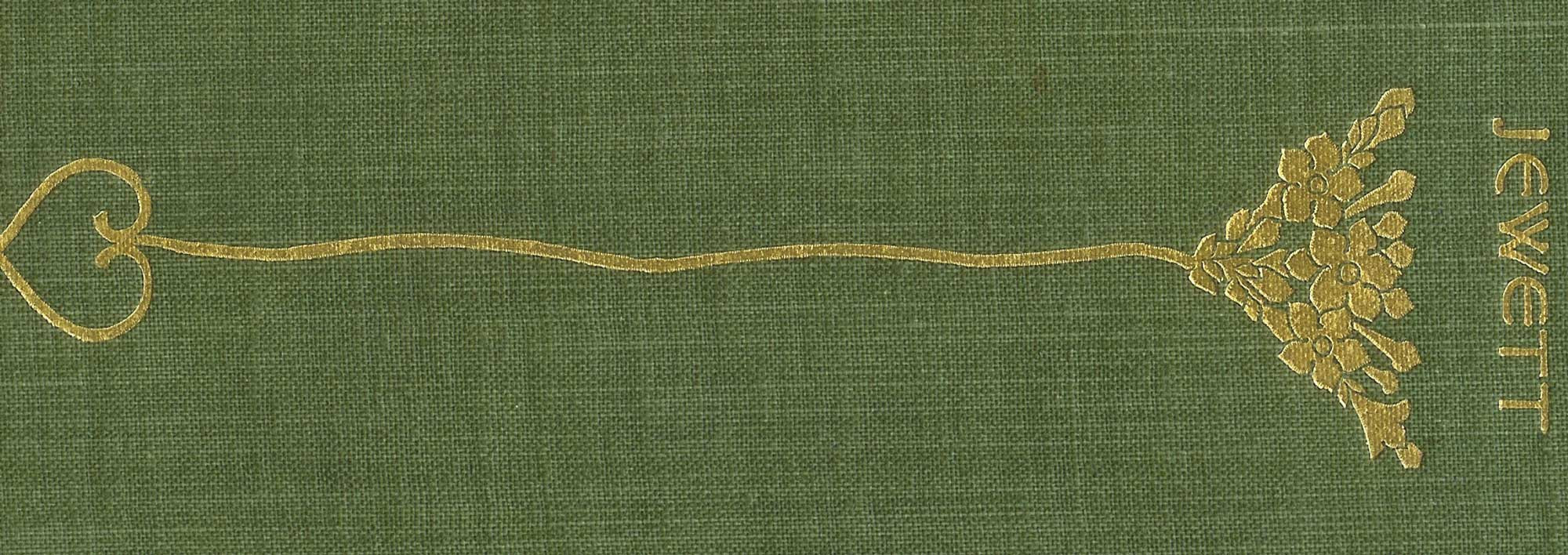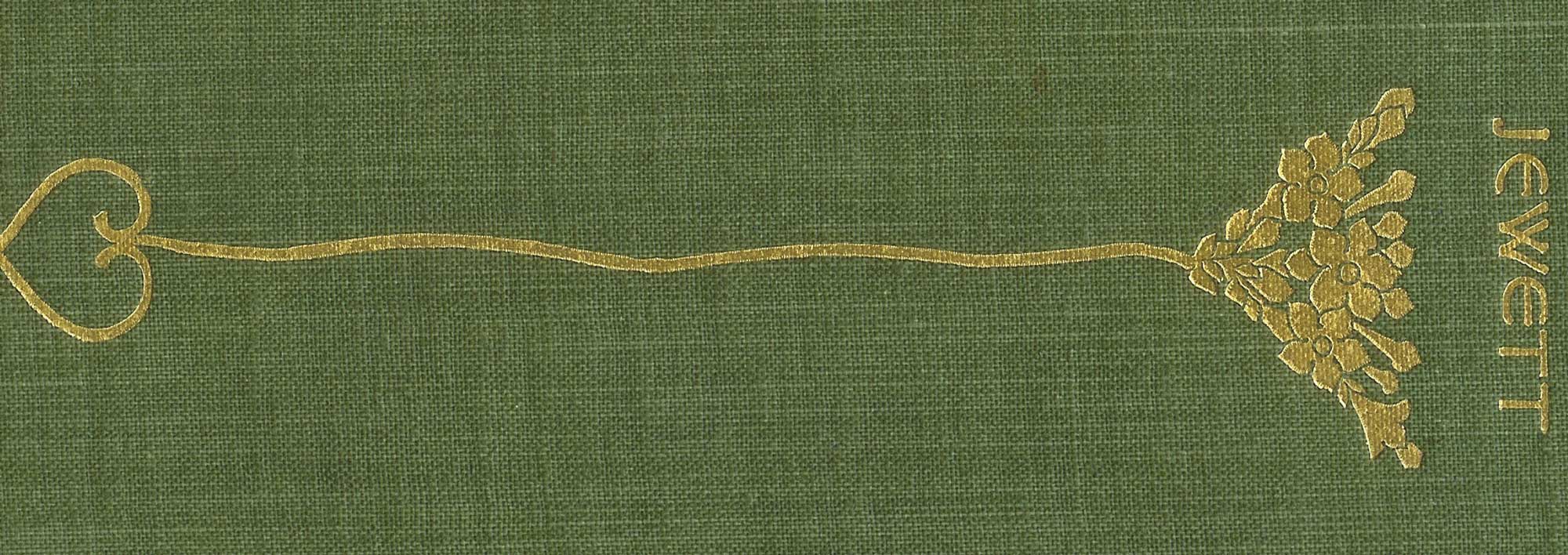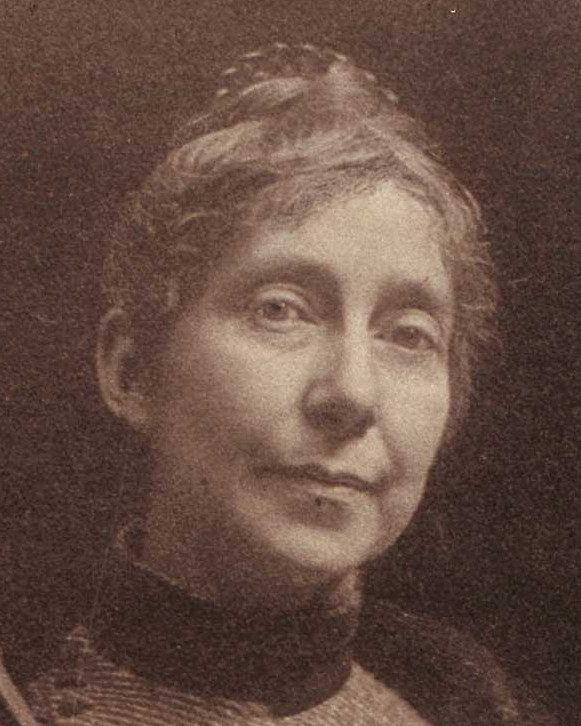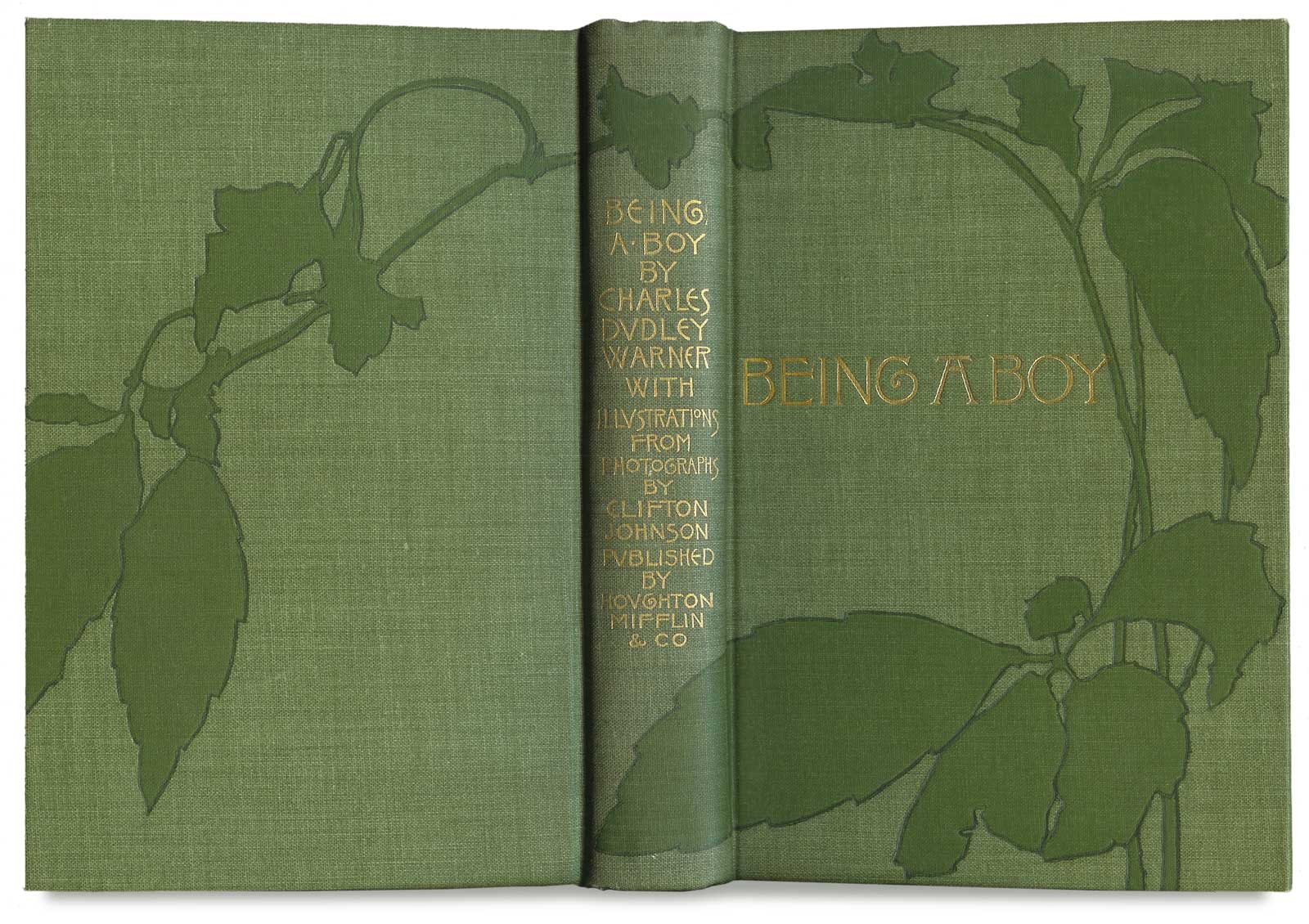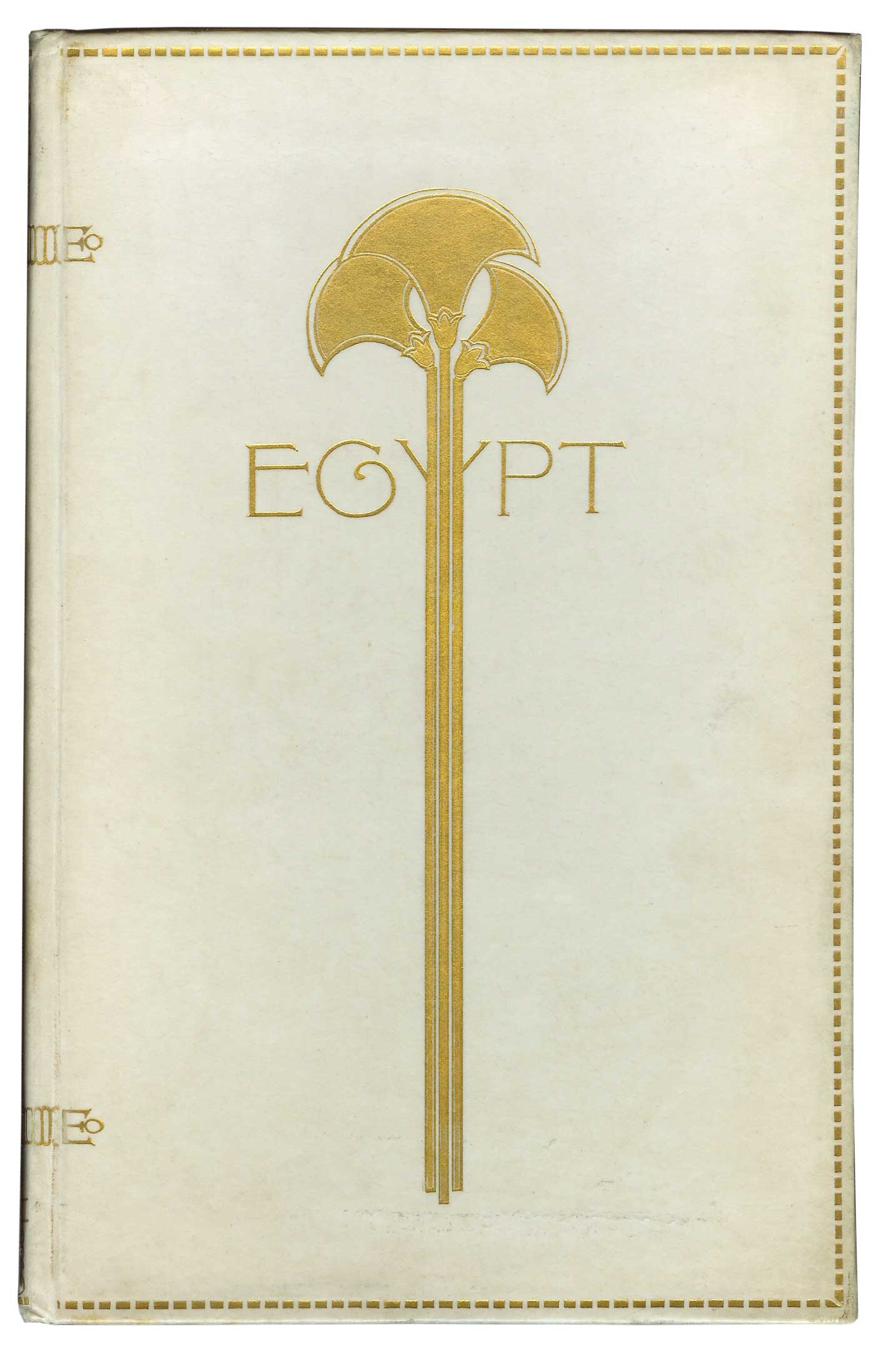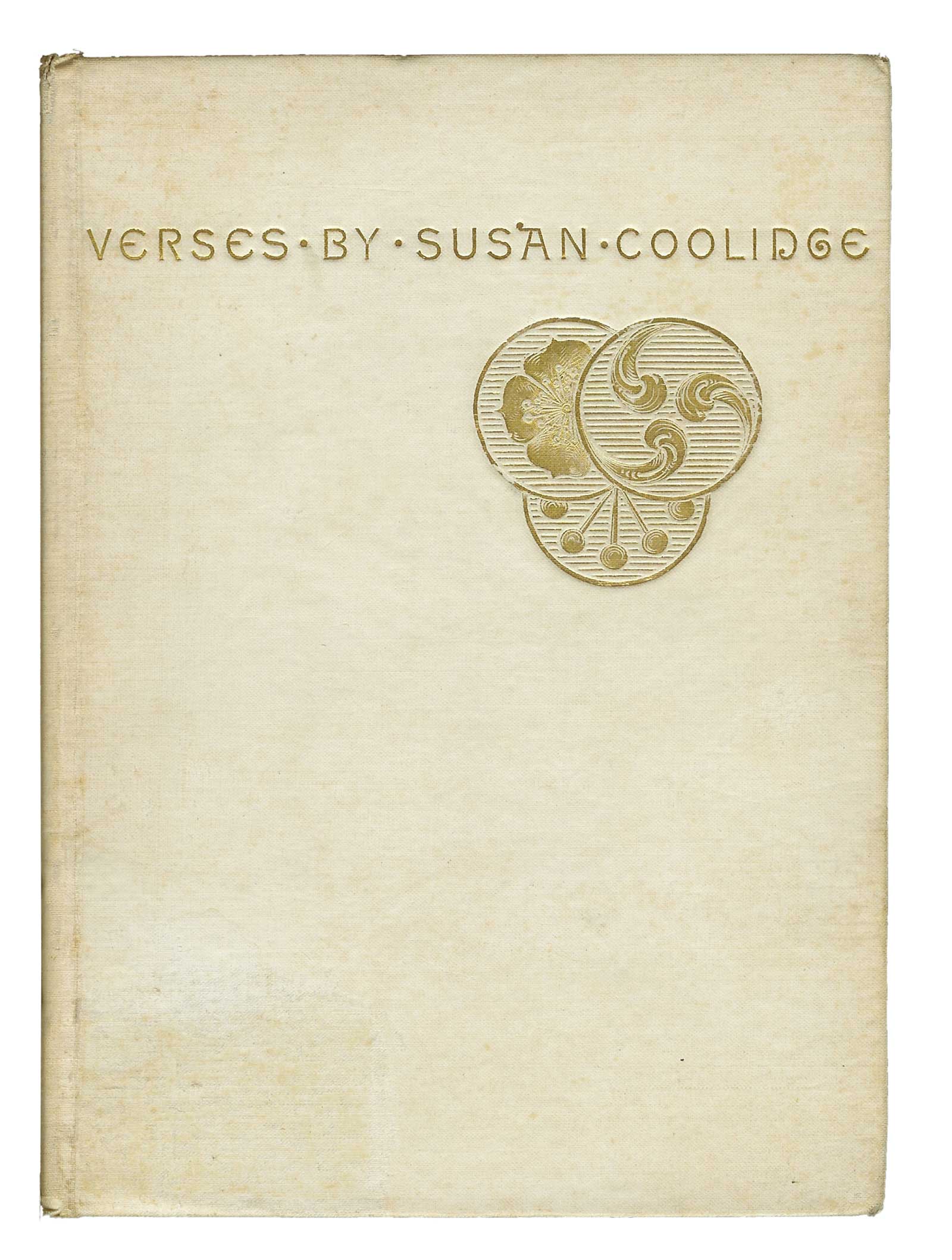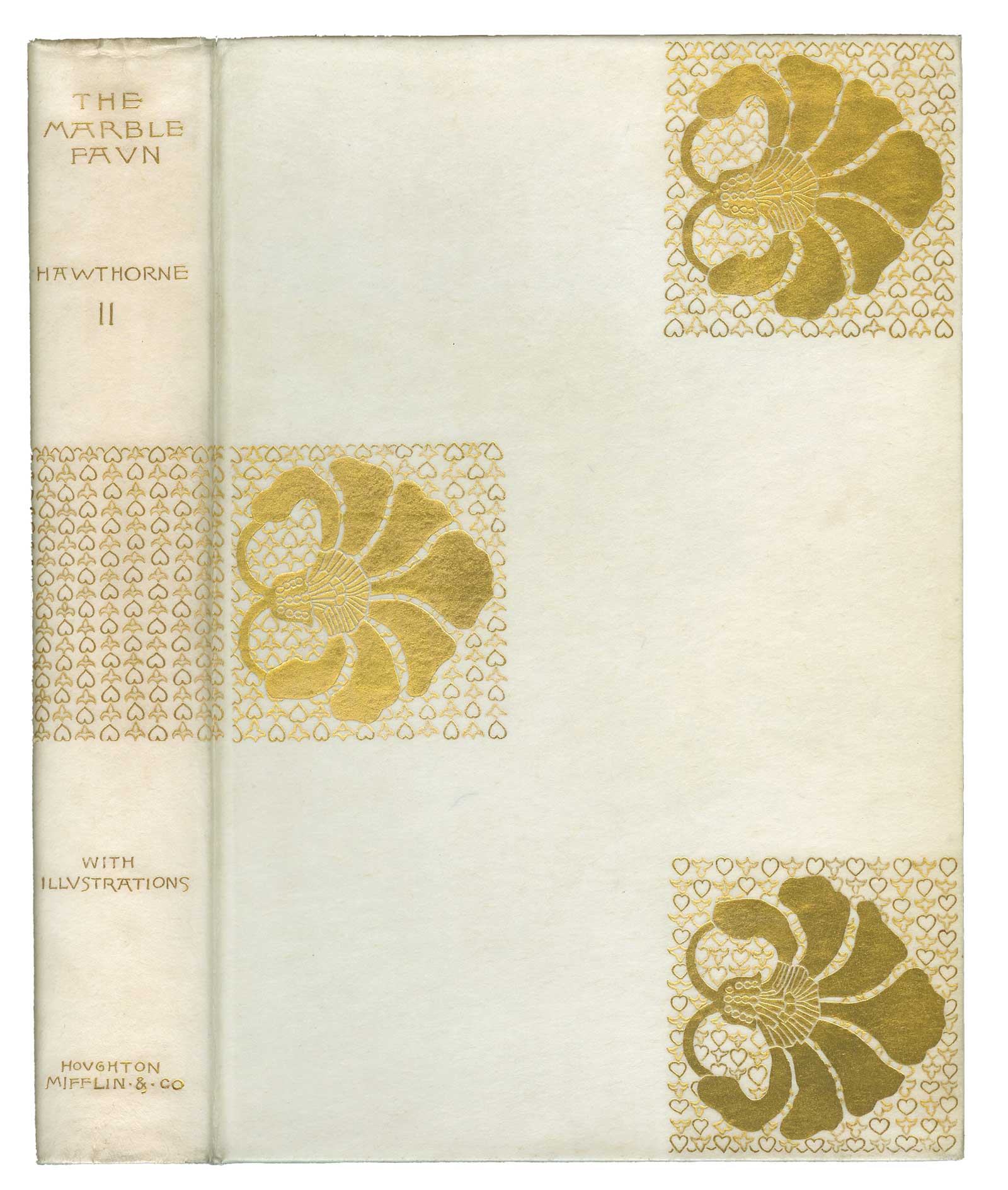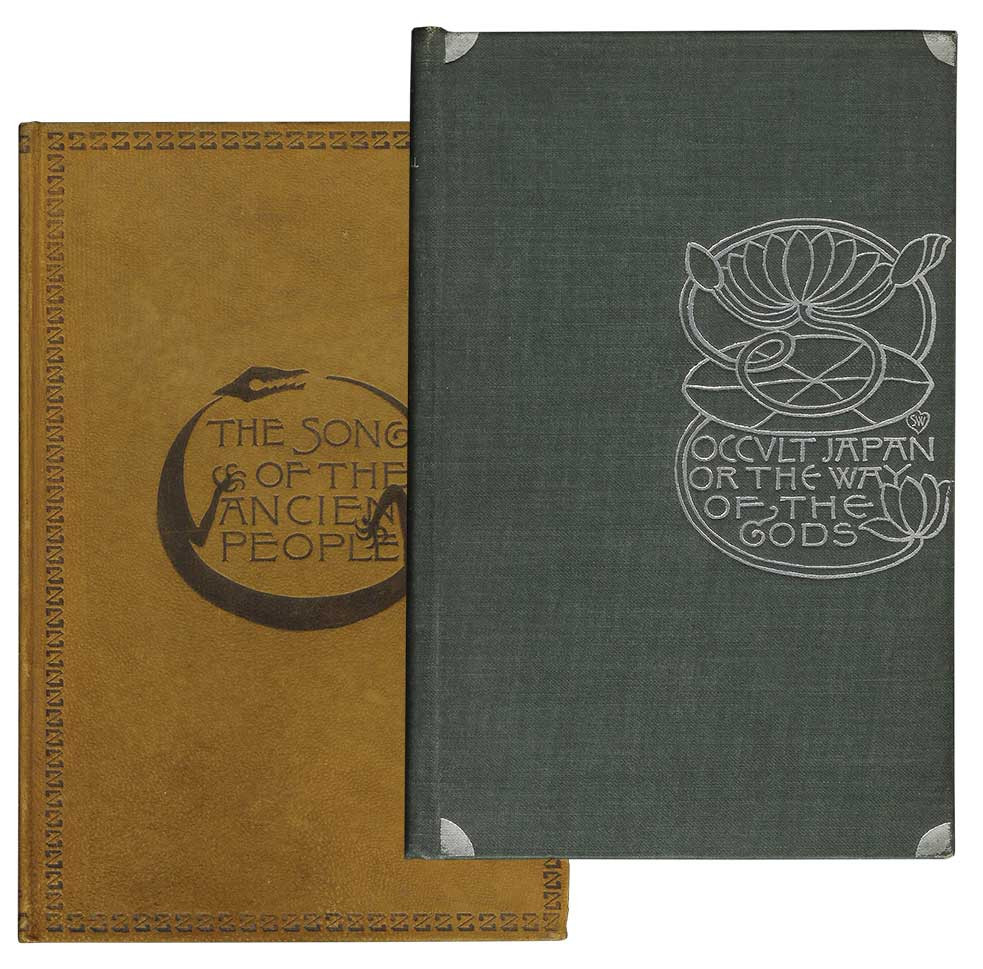Sarah Wyman Whitman (1842–1904) was born in Baltimore and moved to Lowell, Massachusetts, when she was young. She married Henry Whitman, a Boston wool merchant, and moved to Beacon Hill, where she counted among her friends many of the city’s and region’s brightest minds, including Oliver Wendell Holmes, William James, Sarah Orne Jewett, Annie Fields, and Charles Eliot Norton. Her first book designs were created for these writers. She studied art with William Morris Hunt, William Rimmer, and Hunt’s teacher Thomas Couture, exhibiting her work in Boston and in New York starting in the 1870s. In 1884 she inherited a quarter of a million dollars from an uncle, which established her as one of the richest women in Boston and left her free to pursue her artistic interests.
Whitman became the first real artist-designer in the American book industry. She revolutionized trade bookbinding by popularizing simple, spare designs created largely around a distinctive calligraphic lettering that is deliberately uneven and rustic, especially in the first examples, but which quickly developed a casual-seeming elegance. Many of her groundbreaking and most successful designs are based largely, or entirely, on lettering. She wrote that one of her teachers, Thomas Couture, had declared, “letters were the most beautiful embroidery in the world because it was an embroidery that spoke.” She often combined her rustic style with a highly refined and elegant, if somewhat stiff, formal style, using the former for the spine and the latter for the cover. The informal evolved fairly quickly from blocky and crude to simply eccentric, the “Whitman style” we are mostly familiar with; certain elements are distinctive, but were modified over the years. She was the first to design her own distinctive alphabet that was absolutely clear to the eye and that is immediately identifiable as hers. According to Gullans, the designers who followed her “strove to invent one or more markedly individual alphabets which would stand as signature and trademark alike.”
Whitman’s letters A, B, C, E, G, N, and S can be diagnostic. In the informal hand, the A is like that used by Durer, with a crossbar top. B, D, and N curl in at the bottom and usually do not rejoin the vertical stroke; this is especially true for D, which was widely imitated. E is mostly a shallow epsilon, though the early letters are nearly C-shaped. The center bar often ends with a trumpet-shaped serif. G is a sort of vortex whose uppermost end sometimes points slightly upward; S ranges in appearance from two labored C shapes to a sleek, angled slash that extends below the writing line. In the formal style, look for the usually rather small but sharp serifs. All her letters are hand drawn, and the careful observer will note slight variations between repeats. Dots are often used to separate words.

